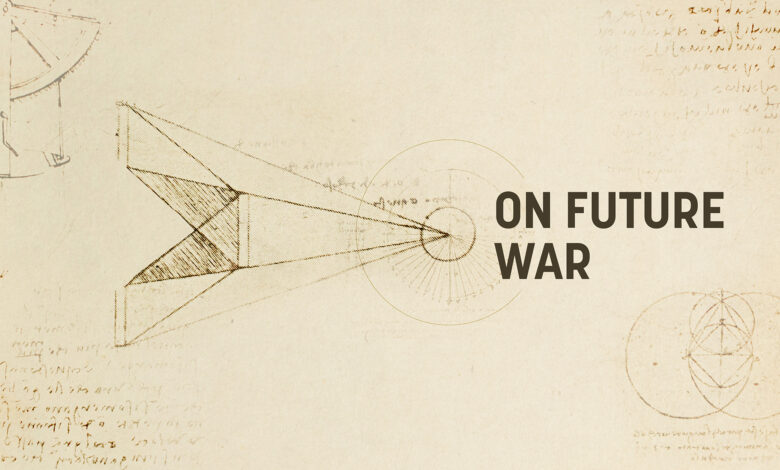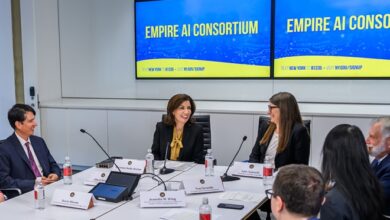Using Artificial Intelligence to Rethink the Unified Command Plan

Policy Options to Explore
While all statistical models are incomplete, some are useful, and generative artificial intelligence (AI) is no different. The ideas that emerged from this experiment suggest three options worth further deliberation for rewriting the UCP.
Enhance Command Structure for Global Engagement and Competition
Across the threads, the generative model highlighted a need to better organize the DOD—if not the entire national security enterprise—for competition short of war. These campaigns would combine traditional security cooperation activity with new efforts to protect U.S. technology and economic access. Better still, this realignment could help better connect competition and contingency planning, a perennial challenge in the Pentagon.
The challenge in the current UCP design is that the authorities for these activities are divided between multiple government agencies that do not have similar regional planning frameworks (e.g., DOS and DOD). Furthermore, these activities are not strictly military, making them outside the purvey of geographic combatant commands. Getting better synchronization, therefore, would likely require deeper debate about how to design a national security system that currently contrasts DOD efforts to manage regional security challenges with the country-specific orientation of the DOS. That is a tall order and one likely to involve Congress.
In the near term, military planners should consider using the UCP to task each combatant command to stand up interagency joint task forces for competition. This standing task force would enact current theater and global competition plans but serve as a focal point for better coordinating with other agency activities. In the absence of new authorities, a large amount of the task force’s time would be used to establish interagency awareness and develop a common understanding of the range of ongoing programs and activities in the region and how best to align competition planning with them. This interagency awareness over time could evolve to inform national security coordination through the NSC and augment experiments with battle networks currently ongoing through the Global Information Dominance Experiments (GIDE) managed by the Chief Digital and Artificial Intelligence Office (CDAO).
Merge Space, Cyber, and Information Effects
Across the threads, an approach to military strategy emerged that stands in stark contrast to the last decade of UCP rewrites. Rather than continue to create new functional commands, the model proposed fusing them into a single command somewhat similar to the recently disbanded PLA Strategic Support Force. In some respects, such an entity could even be folded back into U.S. Strategic Command for a one-stop shop for deterrence and setting conditions for modern war fighting. The operative question is what the DOD gains from creating multiple functional commands instead of streamlining and rationalizing them into new entities.
The UCP rewrite team could consider incremental options, such as focusing on global competition. For example, it could experiment with establishing a sub–unified command in each geographic command focused on integrating space, cyber, and information effects into ongoing operations. While interesting, this incremental approach would likely create duplicate structures and would not address the pull to create four-star headquarters for each new domain alongside new services. Clearly, modern competition and war fighting require the ability to integrate multiple domains. Therefore, assigning roles and missions with this unity of effort in mind should drive UCP reform.
New Regions, Fewer Components
Last, the model suggested realigning existing geographic combatant command boundaries. The model played with new seams for global competition with China, including an Americas Command merging USSOUTHCOM and USNORTHCOM and a Eurasia Command merging USEUCOM and CENTCOM. This logic is similar to that of earlier experiments during the Cold War that went as far as creating one command for overseas forces and another for those in the United States.
Left unsaid by the model was that merging existing geographic combatant command boundaries could produce cost savings and provide a model for even more radical reductions. For example, are service component commands truly necessary? In both his planning guidance and subsequent comments, General Berger, the 38th commandant of the Marine Corps, expressed concerns about a lack of naval integration that inadvertently emerged as a result of the Goldwater-Nichols Act.[31] Maybe it is time to reduce the number of service components at each combatant command, if not eliminate them outright, since service headquarters can coordinate directly to assign forces.
The current team working on the UCP could explore opportunities to reduce the number of headquarters and build structures that better align with the shape of global competition with the CCP.
Conclusion: Back to the Ritual
UCP rewrites are both an opportunity and a bureaucratic conundrum for those who oversee the ritual. Wasting that opportunity, despite the painful debates that need to occur, would abdicate professional responsibility both for those in the fight and for those watching from the outside but still dedicating themselves to national security reform.
The contributions of this report are illustrative, not conclusive. The series of LLMs tailored with key documents highlight big ideas but nothing especially new. For years, national security practitioners have known the current design of the U.S. national security enterprise is broken. The UCP is just one part of that larger Cold War–era bureaucracy in need of a reboot.
The models reiterate the need to rethink functional and geographic command structures alongside their roles and missions. If nothing else, there are significant cost savings to be had from merging commands as well as rethinking the current map. Staffers in the bureaucratic fight over the next UCP must at least answer the question, Why shouldn’t the United States merge the U.S. Space and Cyber Commands? More interesting is the need to imagine new ways of integrating military and nonmilitary power to manage long-term competition with the CCP. Again, ongoing dialogue inside the Pentagon should at least consider an Americas and Eurasia Command and, more importantly, what command structures would best support managing nonmilitary competition with China globally and bridging interagency divides.
Outside of the models, many of these ideas need not take the form of entirely new four-star commands. Rather, new interagency joint task forces—including novel approaches like Joint Task Force Ares, used to combat the Islamic State and subordinate unified commands—offer flexible structures for managing a complex, multidomain, multi-instrument global competition.[32] Even more radical would be using a congressional commission to explore rewriting key authorities and legal code linked to how the United States organizes for national defense and long-term competition. Regardless of what form the next UCP takes, the process of building it should ask hard questions and demand more than answers forged by bureaucratic path dependence, satisficing, and proponency. The world is too dangerous to avoid hard choices; just ask our large-language model.
Benjamin Jensen is a professor in the School of Advanced Warfighting at the Marine Corps University and a senior fellow in the Futures Lab at the Center for Strategic and International Studies (CSIS) in Washington, D.C. Kathleen McInnis is a senior fellow in the International Security Program and the director of the Smart Women, Smart Power Initiative at CSIS. Jose M. Macias III is a research associate in the Futures Lab at CSIS and a Pearson fellow at the Pearson Institute for the Study and Resolution of Global Conflicts at the University of Chicago.
While the views expressed are informed by models, they are the authors’ alone and do not reflect U.S. government policy or the whims of an AI overlord.
This paper was made possible by support from the Carnegie Corporation of New York and the use of Scale AI’s Donovan application.
Please consult the PDF for references.



